🎏Dijstar 最短路径算法(用于计算起始点到最终点的最短路径),一般采用的是贪心算法策略=.=🎃
图解 Open list 和 close list
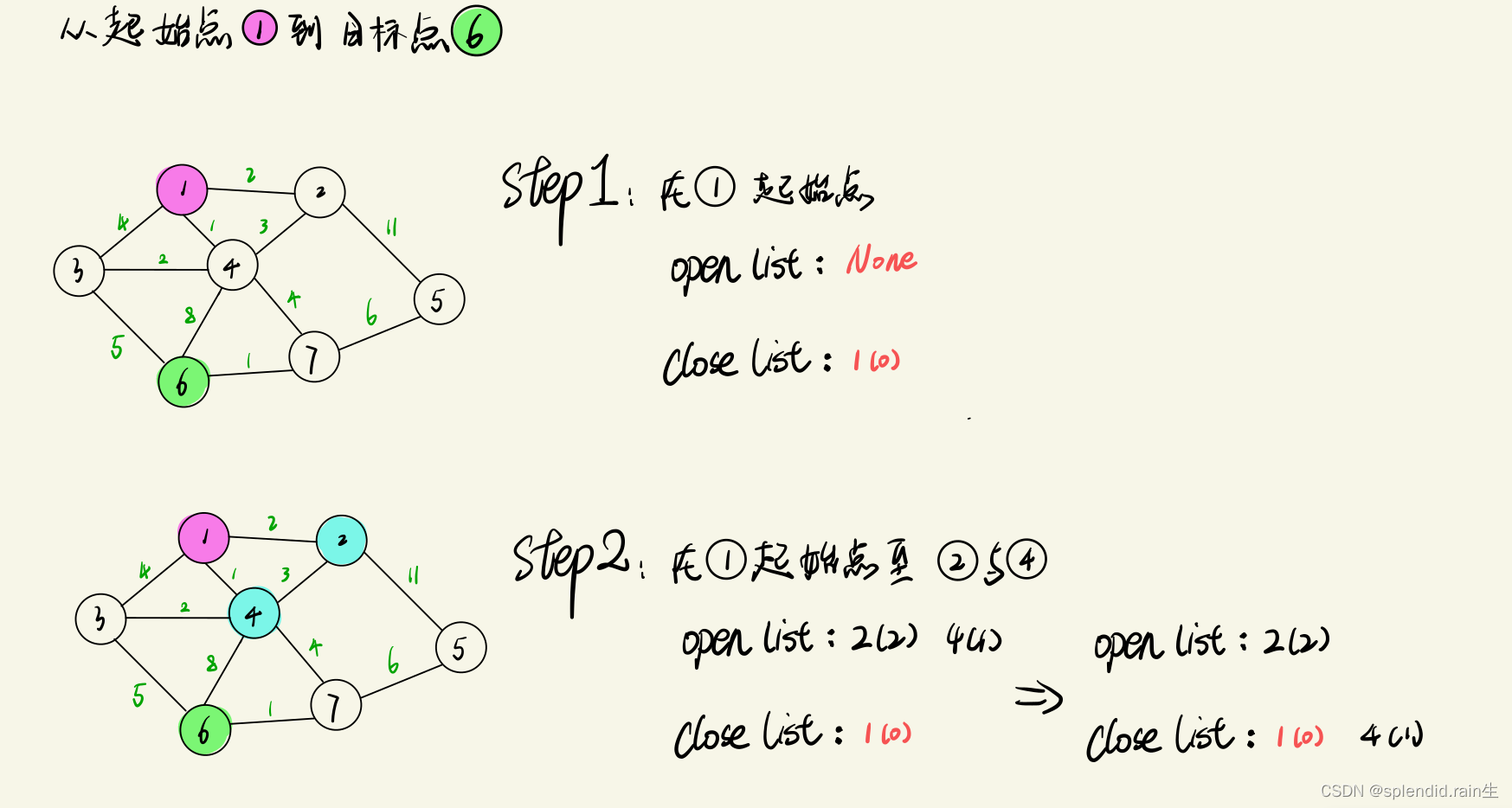
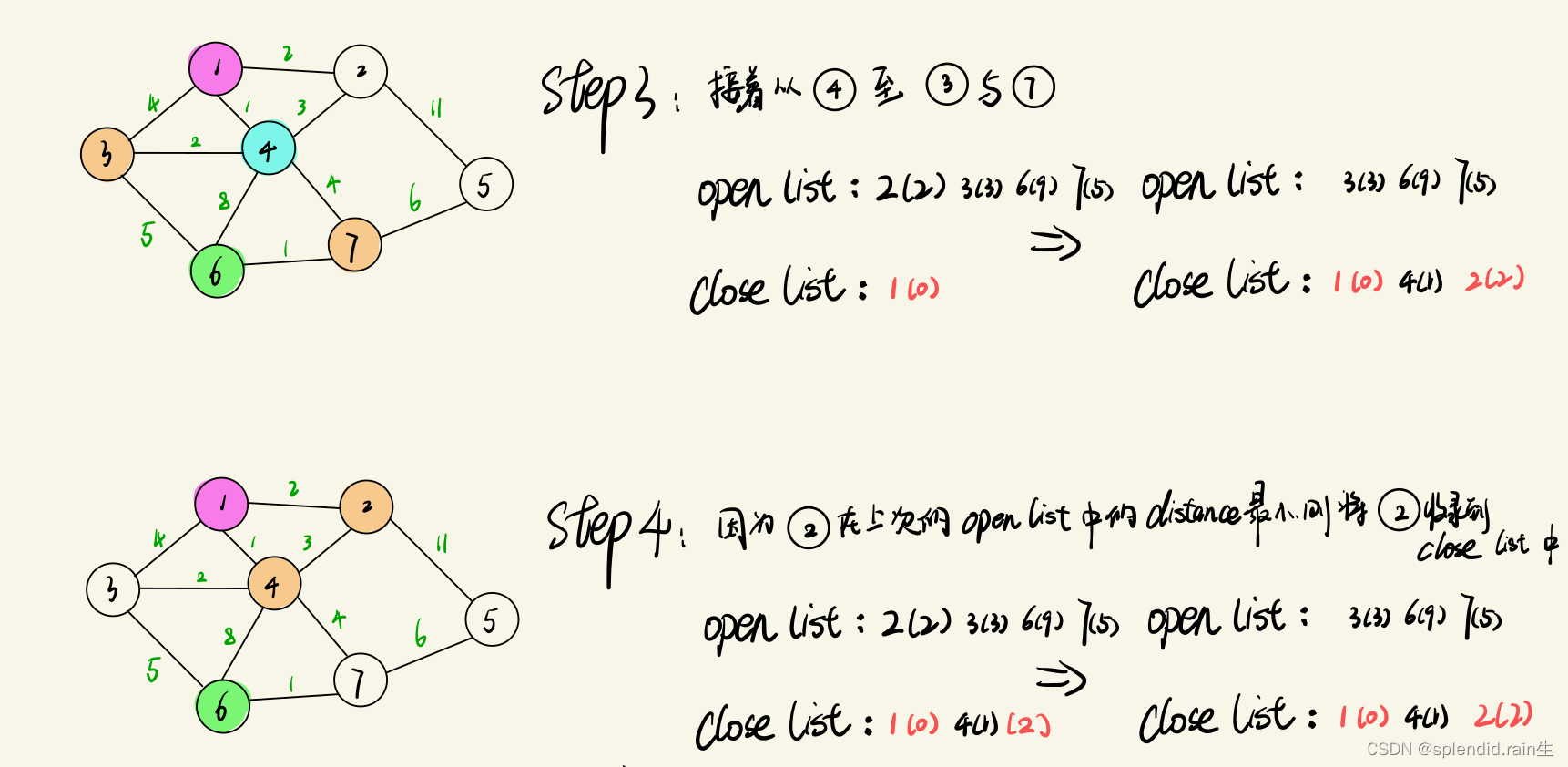
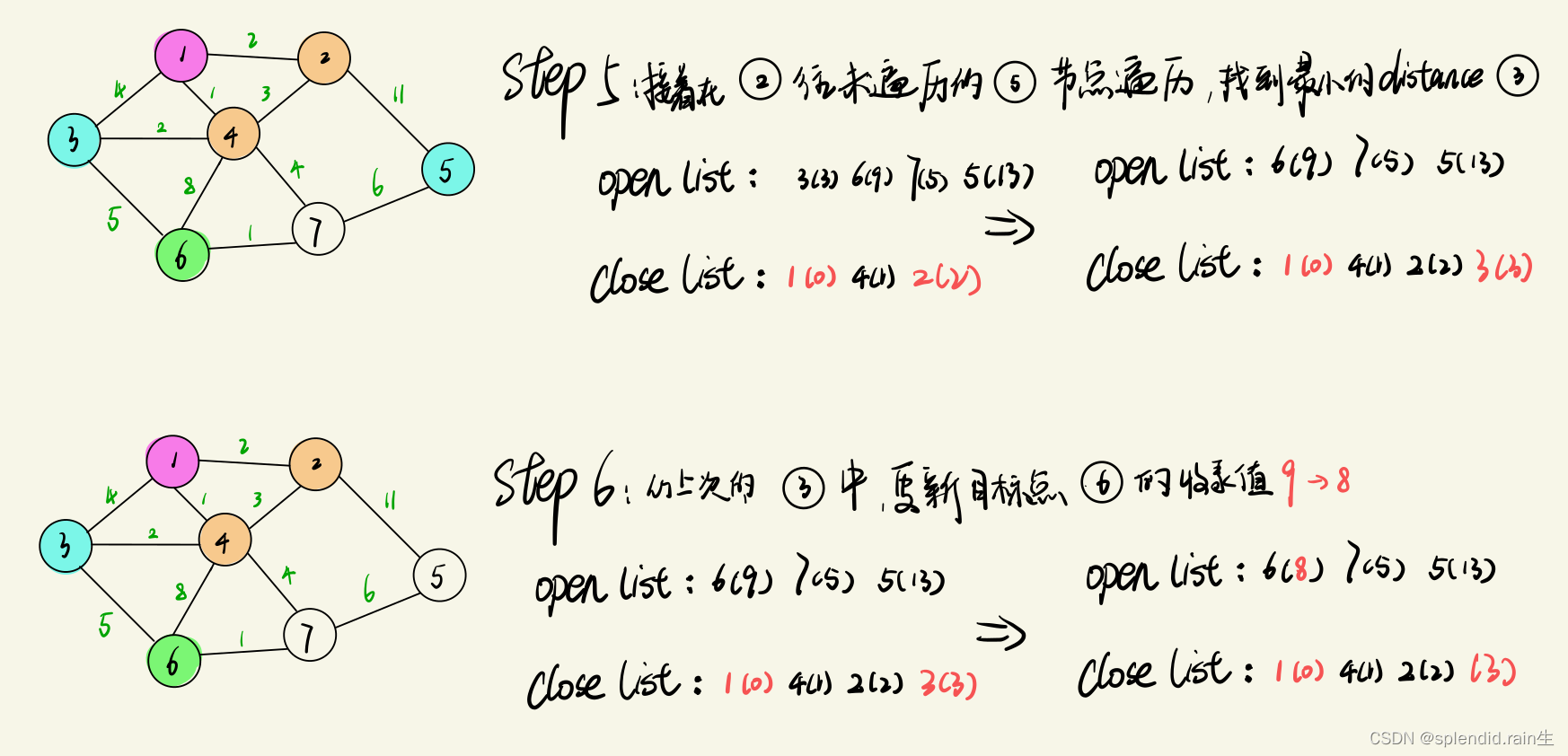
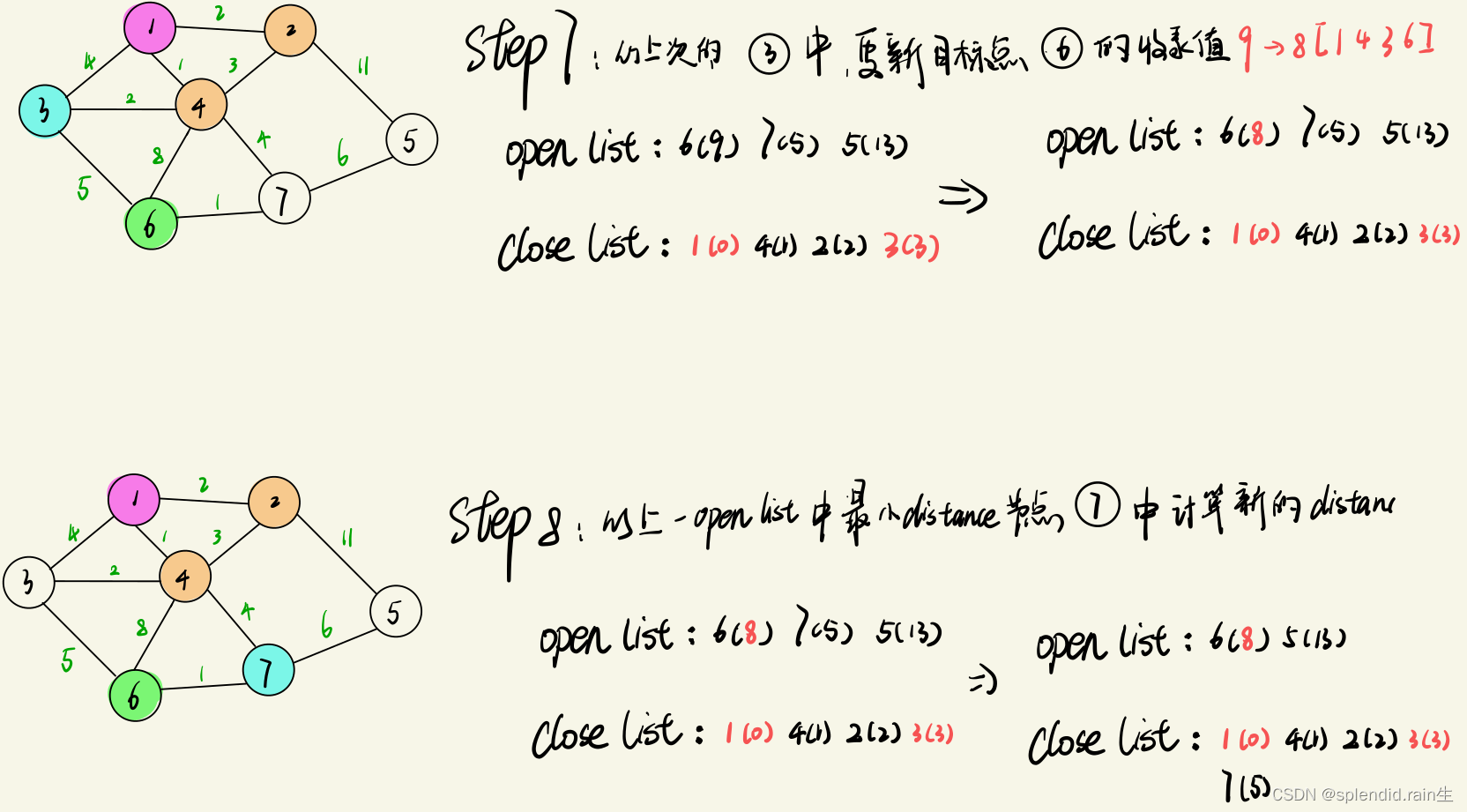

环境
(Terminal) 需要预先安装两个库 matplotlib 和 math
pip3 install matplotlib
pip3 install math
可以运行 Python 的环境
- ubuntu 18.04
- python3
程序思路
代码片段
- 开始点和终止点的初始化,设置 x y z
start_node = self.Node(self.calc_xy_index(sx, self.min_x),
self.calc_xy_index(sy, self.min_y), 0.0, -1) # round((position - minp) / self.resolution)
goal_node = self.Node(self.calc_xy_index(gx, self.min_x),
self.calc_xy_index(gy, self.min_y), 0.0, -1)
open_set, closed_set = dict(), dict() # 字典的形式,可以通过 key 得到值,可以
open_set[self.calc_index(start_node)] = start_node
- 获取最小点节点,并且更新和替换掉当前的节点位置
c_id = min(open_set, key=lambda o: open_set[o].cost) # 取cost最小的节点
current = open_set[c_id]
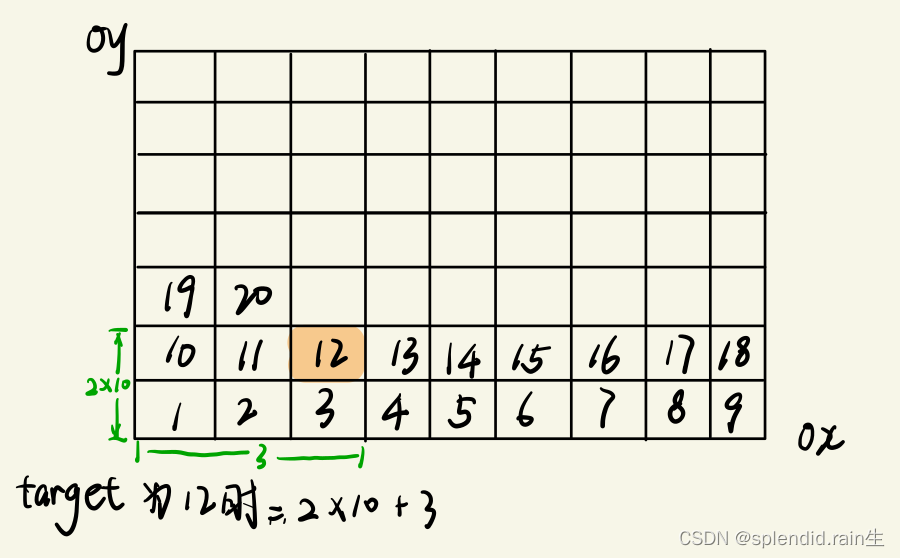
- 机器人在栅格地图内的移动模型(3x3)
def get_motion_model():
# dx, dy, cost 就是在 x 和 y 的方向和临近点的代价
motion = [[1, 0, 1],
[0, 1, 1],
[-1, 0, 1],
[0, -1, 1],
[-1, -1, math.sqrt(2)],
[-1, 1, math.sqrt(2)],
[1, -1, math.sqrt(2)],
[1, 1, math.sqrt(2)]]
return motion
其中[第一位,第二位,第三位]表示在 x 方向和 y 方向移动的步数,第三位可以理解成为损失代价
- 当前节点的 g(n) 运算,以及 cost
node = self.Node(current.x + move_x,
current.y + move_y,
current.cost + move_cost, c_id)
总代码
"""
Dijkstra 栅格地图导航
author: Shen Mingsheng(@gcusms)
"""
import matplotlib.pyplot as plt
import math
show_animation = True
# 定义一个个 Dijkstra 的类
class Dijkstra:
def __init__(self, ox, oy, resolution, robot_radius):
"""
初始化地图
ox: x 方向上的障碍物
oy: y 方向上的障碍物
resolution: 可以理解为栅格之间的步长(分辨率)
rr: 机器人的半径
"""
self.min_x = None
self.min_y = None
self.max_x = None
self.max_y = None
self.x_width = None
self.y_width = None
self.obstacle_map = None
self.resolution = resolution
self.robot_radius = robot_radius
self.calc_obstacle_map(ox, oy)
self.motion = self.get_motion_model()
class Node:
def __init__(self, x, y, cost, parent_index):
self.x = x # index of grid
self.y = y # index of grid
self.cost = cost # g(n)
self.parent_index = parent_index # index of previous Node
def __str__(self):
return str(self.x) + "," + str(self.y) + "," + str(
self.cost) + "," + str(self.parent_index)
def planning(self, sx, sy, gx, gy):
start_node = self.Node(self.calc_xy_index(sx, self.min_x),
self.calc_xy_index(sy, self.min_y), 0.0, -1) # round((position - minp) / self.resolution)
goal_node = self.Node(self.calc_xy_index(gx, self.min_x),
self.calc_xy_index(gy, self.min_y), 0.0, -1)
open_set, closed_set = dict(), dict() # 字典的形式,可以通过 key 得到值,可以
open_set[self.calc_index(start_node)] = start_node
while 1:
c_id = min(open_set, key=lambda o: open_set[o].cost) # 取cost最小的节点
current = open_set[c_id]
# 显示图像
if show_animation: # pragma: 不覆盖参数
plt.plot(self.calc_position(current.x, self.min_x),
self.calc_position(current.y, self.min_y), "xc")
# ESC 键退出
plt.gcf().canvas.mpl_connect(
'key_release_event',
lambda event: [exit(0) if event.key == 'escape' else None])
if len(closed_set.keys()) % 10 == 0:
plt.pause(0.001)
# 判断是否是终点
if current.x == goal_node.x and current.y == goal_node.y:
print("Find goal")
goal_node.parent_index = current.parent_index
goal_node.cost = current.cost
break
# 如果不是终点的话就将 Open list 当中的最小 g(n) key 值删除
del open_set[c_id]
# 将当前的节点放入到 Close list 节点当中
closed_set[c_id] = current
# 收录和判断当前节点附近的点
for move_x, move_y, move_cost in self.motion:
node = self.Node(current.x + move_x,
current.y + move_y,
current.cost + move_cost, c_id)
n_id = self.calc_index(node) # 计算当前节点的 key
if n_id in closed_set: # 判断 key 是否收录到 open list 里面
continue
if not self.verify_node(node):
continue
if n_id not in open_set:
open_set[n_id] = node # 发现新的点
else:
if open_set[n_id].cost >= node.cost:
# 当前的节点花费已经足够小,已经不需要接着往下检索
open_set[n_id] = node
rx, ry = self.calc_final_path(goal_node, closed_set)
return rx, ry
# 找到最终的路径
def calc_final_path(self, goal_node, closed_set):
# 生成最终的路径
rx, ry = [self.calc_position(goal_node.x, self.min_x)], [
self.calc_position(goal_node.y, self.min_y)]
parent_index = goal_node.parent_index
while parent_index != -1:
n = closed_set[parent_index]
rx.append(self.calc_position(n.x, self.min_x))
ry.append(self.calc_position(n.y, self.min_y))
parent_index = n.parent_index
return rx, ry
def calc_position(self, index, minp):
pos = index * self.resolution + minp
return pos
# 将(当前的位置 - 最小的一个栅格值) / 栅格的大小 = 索引值
def calc_xy_index(self, position, minp):
return round((position - minp) / self.resolution)
def calc_index(self, node):
return node.y * self.x_width + node.x
def verify_node(self, node):
px = self.calc_position(node.x, self.min_x)
py = self.calc_position(node.y, self.min_y)
if px < self.min_x:
return False
if py < self.min_y:
return False
if px >= self.max_x:
return False
if py >= self.max_y:
return False
if self.obstacle_map[node.x][node.y]:
return False
return True
def calc_obstacle_map(self, ox, oy):
''' 第1步: 构建栅格地图 '''
self.min_x = round(min(ox))
self.min_y = round(min(oy))
self.max_x = round(max(ox))
self.max_y = round(max(oy))
print("min_x:", self.min_x)
print("min_y:", self.min_y)
print("max_x:", self.max_x)
print("max_y:", self.max_y)
self.x_width = round((self.max_x - self.min_x) / self.resolution) # x 方向上的栅格数量
self.y_width = round((self.max_y - self.min_y) / self.resolution) # y 方向上的栅格数量
print("x_width:", self.x_width)
print("y_width:", self.y_width)
# 初始化地图
self.obstacle_map = [[False for _ in range(self.y_width)]
for _ in range(self.x_width)]
# 设置障碍物
for ix in range(self.x_width):
x = self.calc_position(ix, self.min_x) # 栅格加上偏移值
for iy in range(self.y_width):
y = self.calc_position(iy, self.min_y)
for iox, ioy in zip(ox, oy):
d = math.hypot(iox - x, ioy - y) # 计算障碍物到栅格的距离
''' 如果机器人的的宽度大于栅格的大小,就将栅格地图膨胀'''
if d <= self.robot_radius:
self.obstacle_map[ix][iy] = True
break
@staticmethod
def get_motion_model():
# dx, dy, cost 就是在 x 和 y 的方向和临近点的代价
motion = [[1, 0, 1],
[0, 1, 1],
[-1, 0, 1],
[0, -1, 1],
[-1, -1, math.sqrt(2)],
[-1, 1, math.sqrt(2)],
[1, -1, math.sqrt(2)],
[1, 1, math.sqrt(2)]]
return motion
def main():
# 设置起始点 sx sy,和终止点 gx gy,机器人的半径
sx = -5.0 # [m]
sy = -5.0 # [m]
gx = 50.0 # [m]
gy = 50.0 # [m]
grid_size = 2.0 # [m]
robot_radius = 1.0 # [m]
# 设置障碍物的位置
ox, oy = [], []
for i in range(-10, 60):
ox.append(i)
oy.append(-10.0)
for i in range(-10, 60):
ox.append(60.0)
oy.append(i)
for i in range(-10, 61):
ox.append(i)
oy.append(60.0)
for i in range(-10, 61):
ox.append(-10.0)
oy.append(i)
for i in range(-10, 40):
ox.append(20.0)
oy.append(i)
for i in range(0, 40):
ox.append(40.0)
oy.append(60.0 - i)
if show_animation:
plt.plot(ox, oy, ".k")
plt.plot(sx, sy, "og")
plt.plot(gx, gy, "xb")
plt.grid(True)
plt.axis("equal")
dijkstra = Dijkstra(ox, oy, grid_size, robot_radius)
rx, ry = dijkstra.planning(sx, sy, gx, gy)
if show_animation:
plt.plot(rx, ry, "-r")
plt.pause(0.01)
plt.show()
if __name__ == '__main__':
main()
预览效果

🌸🌸🌸完结撒花🌸🌸🌸
🌈🌈Redamancy🌈🌈